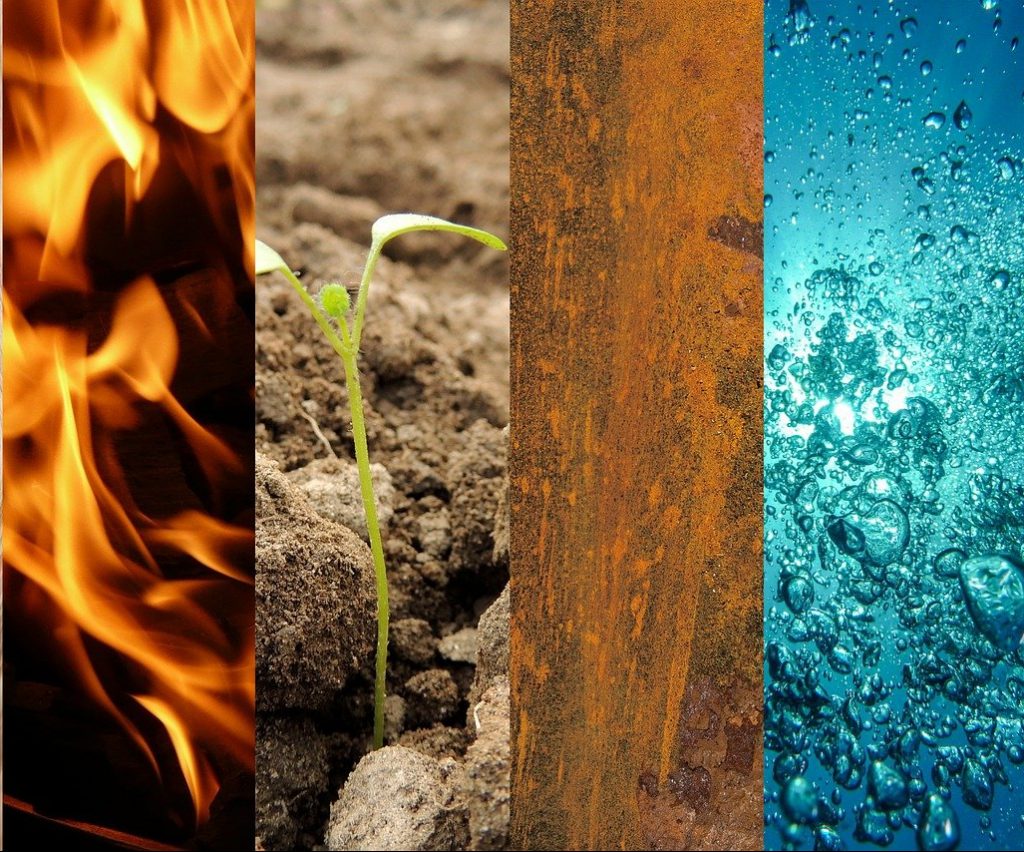Elemental Subtype

An elemental is a being composed entirely from one of the four classical elements: air, earth, fire, or water.
An elemental has the following features.
- Immunity to bleed, paralysis, poison, sleep effects, and stunning.
- Not subject to critical hits or flanking. Does not take additional damage from precision-based attacks, such as sneak attack.
- Proficient with natural weapons only, unless generally humanoid in form, in which case proficient with all simple weapons and any weapons mentioned in its entry.
- Proficient with whatever type of armor (light, medium, or heavy) it is described as wearing, as well as all lighter types. Elementals not indicated as wearing armor are not proficient with armor. Elementals are proficient with shields if they are proficient with any form of armor.
- Elementals do not breathe, eat, or sleep.
Binding an Elemental
Source: PZO1117 (see Binding Outsiders for further details.)
True elementals are simple creatures, thriving spirits animating bodies of pure elemental matter. They regard their lives as an eternal struggle to best themselves and each other. Each elemental type is uniquely suited to adapting to conditions on its particular plane, and is arrogant about its powers when surrounded by its element… and uniquely frightened and cowed when shown a greater power or encased in an element not its own. Most elementals do not bargain for favors—they respect only strength.
Should a conjurer wish to bind an elemental as he would a genie or fiend, the ritual is one of wrestling with the elemental’s creativity in reaching its home element. Elementals are immune to bleed, paralysis, poison, sleep effects, and stunning. They are not subject to critical hits, precision-based attacks like sneak attack, or flanking.
Air Elemental: When summoning an air elemental, inscribe the magic circle with diamond powder, and release the elemental only once it has acquiesced to the caster’s power. This costs an additional 2,000 gp but adds +4 to the Charisma check.
Belker: These dull-witted creatures enjoy expensive incense and exotic green woods that create heavy smoke.
Crysmal: Unlike other elementals, crysmals do bargain, but agree to a binder’s demands only if offered a substantial amount of crystal, which they use for reproduction.
Earth Elemental: Prepare the summoning chamber with swirling wind- and air-based spells to prevent the elemental from touching the floor. Maintaining this state for 5 rounds demonstrates the binder’s superiority over the elemental, and grants a +4 bonus on the Charisma check.
Fire Elementals: When summoning a fire elemental, enclose the casting chamber with stone, remove flammable materials from the room, and prepare a magic circle and spells to protect against fire. Keeping large blocks of ice in the room saps the elemental’s power and cows it into submission more quickly, giving the caster a +4 bonus on the Charisma check to trap the elemental.
Ice Elemental: Binders use actual fire, fire spells, protections against cold, and sometimes even fire creatures to keep ice elementals at bay during summoning. An ice elemental often yields to its binder as soon as serious melting occurs.
Invisible Stalker: The tactics used to bind invisible stalkers are similar to those used for binding air elementals. Unlike many elementals, invisible stalkers bargain for their services, which is why they are often summoned by mortal spellcasters.
Lightning Elemental: Lightning elementals are similar to air elementals in that the same bindings work on them, though binders would do well to reinforce such bindings and themselves with protections against electrical damage.
Magma Elemental: Magma elementals are composite elemental creatures, taking some aspects from earth elementals and fire elementals. Unsurprisingly, a mix of binding strategies from those two types of elementals often keeps these savage things at bay.
Mihstu: The strategy for binding and commanding these creatures is similar to that for an air elemental. Unlike other elementals, mihstu typically bargain with the binder, as many wish to haunt the dark places of the Material Plane.
Mud Elemental: While mud elementals vary in consistency, all of them fear becoming too watery or too dry, as both conditions have adverse effects on them. Using air spells and petrification spells as punishments for noncompliance usually makes these elementals more willing to take direction and enter into negotiations for appropriate gifts for services rendered.
Sandman: Subtle and craftier than other elementals, these creatures nearly always bargain with their binder, but are arrogant and headstrong. Even after their task is done, they voluntarily remain on the Material Plane to wreak as much havoc as possible.
Thoqqua: Natives of the harsh landscape where the Planes of Fire and Earth collide, thoqquas are dangerous creatures to summon and bind, and typically rage against their confines, even when properly bound. Those wishing to bind a thoqqua frequently use mephit intermediaries, as those creatures seem to understand thoqquas enough to calm them.
Water Elemental: When summoning a water elemental, remove sources of water from the room and prepare a bonfire. A ring of fire around the magic circle exposes the elemental to its hated enemy the instant it appears on the Material Plane, distracting it long enough for the binder to seize control. This is an opposed Will check, granting a +1 bonus to the caster for each large fire in the room; success grants a +4 bonus on the Charisma check.

 Buy me a coffee
Buy me a coffee